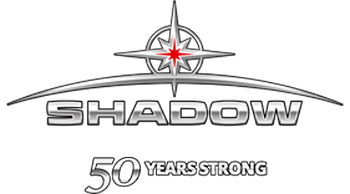Transporting pressurized chemical tanks is a task that demands meticulous planning, specialized equipment, and in-depth industry knowledge. Whether you are moving these tanks across town or across the country, the stakes are high: safety, regulatory compliance, and operational efficiency must all be carefully balanced.
At Shadow Group, we understand how critical each step is in this complex process. Our specialized Bulk Pneumatic Services are tailored to handle a wide range of pressurized and hazardous materials, ensuring optimal safety and reliability at every turn. Below, we’ve made 7 essential considerations from our experience to guarantee your pressurized chemical tanks travel securely and efficiently.
1. Thorough Planning and Risk Assessment
Every successful move begins with a comprehensive plan. This involves mapping out detailed routes to avoid heavily congested areas, low bridges, or other potential obstacles. A robust risk assessment is key—anticipating hazards such as poor road conditions, extreme weather, and high-traffic zones allows your team to devise alternative routes or schedule transport during off-peak hours. When working with pressurized materials, it’s best to have contingency plans in place for on-the-road emergencies and unexpected delays.
2. Specialized Equipment and Secure Packaging
Safely moving pressurized chemical tanks requires the right tools for the job. Specialized trucks with pneumatic systems or other advanced features help stabilize the tanks and maintain consistent pressure throughout the journey. Tanks must also be securely packaged to mitigate the risk of leaks or damage.
This often includes additional protective barriers, shock-absorbent materials, and reinforced strapping to reduce movement. Proper labeling is equally important—clearly identifying hazardous materials ensures that everyone handling or near the cargo is aware of the potential risks.
3. Skilled Operators and Safety Training
Even the best equipment is only as effective as the people operating it. Moving pressurized chemical tanks calls for drivers and logistics personnel who have undergone extensive training and are fully aware of the unique challenges involved. These professionals are adept at handling both routine tasks and unexpected issues, such as sudden pressure fluctuations or the need for emergency inspections.
Regular safety workshops, certification updates, and on-the-road performance evaluations all ensure that drivers and support staff are equipped with the latest knowledge and best practices
4. Adherence to Regulatory Compliance
Regulatory compliance cannot be overlooked when transporting hazardous or pressurized materials. Federal, state, and local guidelines often dictate everything from labeling requirements to specific handling procedures.
Working with a partner like Shadow Group that keeps up with evolving regulations—including Department of Transportation (DOT) standards and Occupational Safety and Health Administration (OSHA) guidelines—safeguards your operation. Proper documentation, accurate manifests, and thorough inspection reports are all part of a well-structured compliance program.
5. Routine Inspections and Equipment Maintenance
Routine inspections are vital to ensuring each pressurized tank remains secure throughout the trip. Tanks, valves, hoses, and fittings should be examined before, during, and after the journey, and any signs of wear or damage should be addressed immediately. Similarly, maintenance checks on transport vehicles—such as tire pressure and brake condition—help minimize breakdowns and accidents. Keeping a strict inspection schedule significantly reduces the chance of costly downtime and safety incidents.
6. Accounting for Environmental Factors
Weather and environmental conditions can impact pressure levels, structural integrity, and driving safety. Extreme temperatures, heavy rains, or icy roads all pose additional challenges. Adjusting routes or departure times based on weather forecasts and equipping drivers with real-time updates can help mitigate these risks. Having properly insulated equipment can also maintain temperature-sensitive chemicals within safe ranges.
7. Partnering with an Experienced Logistics Provider
Transporting pressurized chemical tanks is not a task to be taken lightly. Working with a reliable partner who has extensive industry experience, such as Shadow Group, provides peace of mind. From the initial risk assessment to the final delivery, expert guidance helps you navigate regulatory changes, ensure secure handling, and maintain strict safety protocols at every stage.
Your Trusted Partner for Safely Moving Pressurized Chemical Tanks
Safely moving pressurized chemical tanks is no small feat, but you can trust Shadow Group’s specialized expertise and commitment to best-in-class transport solutions to get the job done right.
Our experienced team offers Bulk Pneumatic Services designed to simplify logistics and maintain the highest safety standards. Contact us to discuss how we can tailor our services to your specific needs, ensuring your pressurized chemical tanks reach their destination securely and on time.
